
The Allure of Wind River Range
Explore the majestic Wind River Range in Wyoming, where rugged peaks, pristine lakes, and abundant wildlife await. A true haven for adventurers and nature lovers.
Nestled in the heart of Wyoming, the Wind River Range is a paradise for outdoor enthusiasts. This mountain range offers breathtaking landscapes, with towering peaks, sparkling alpine lakes, and dense forests. The range includes more than 40 peaks over 13,000 feet, making it a premier destination for mountaineers and hikers alike. The Wind River Range is part of the Rocky Mountains and stretches for approximately 100 miles. It is home to the Bridger Wilderness and the Popo Agie Wilderness, which together offer over 600 miles of trails. The Continental Divide Trail also passes through the range, providing hikers with stunning views and challenging terrain. Wildlife is abundant in the Wind River Range. You might spot elk, bighorn sheep, and even the occasional grizzly bear. The area is also a haven for fishing, with numerous streams and lakes stocked with trout. For those interested in history, the range has a rich Native American heritage, particularly the Shoshone tribe, who have lived in the region for centuries. The Wind River Range is not just for the hardcore adventurer. It also offers serene spots for camping, picnicking, and simply enjoying the beauty of nature. Whether you're looking to conquer a peak or just unwind by a lake, Wind River Range is a destination that promises unforgettable experiences.
Local tips in Wind River Range
- Check the weather before you go; the range can have sudden weather changes.
- Bring bear spray; grizzly bears are known to inhabit the area.
- Wear sturdy hiking boots; the trails can be rocky and uneven.
- Pack plenty of water and snacks; there are limited facilities within the range.
- Consider hiring a guide if you are not an experienced hiker; the terrain can be challenging.
The Allure of Wind River Range
Nestled in the heart of Wyoming, the Wind River Range is a paradise for outdoor enthusiasts. This mountain range offers breathtaking landscapes, with towering peaks, sparkling alpine lakes, and dense forests. The range includes more than 40 peaks over 13,000 feet, making it a premier destination for mountaineers and hikers alike. The Wind River Range is part of the Rocky Mountains and stretches for approximately 100 miles. It is home to the Bridger Wilderness and the Popo Agie Wilderness, which together offer over 600 miles of trails. The Continental Divide Trail also passes through the range, providing hikers with stunning views and challenging terrain. Wildlife is abundant in the Wind River Range. You might spot elk, bighorn sheep, and even the occasional grizzly bear. The area is also a haven for fishing, with numerous streams and lakes stocked with trout. For those interested in history, the range has a rich Native American heritage, particularly the Shoshone tribe, who have lived in the region for centuries. The Wind River Range is not just for the hardcore adventurer. It also offers serene spots for camping, picnicking, and simply enjoying the beauty of nature. Whether you're looking to conquer a peak or just unwind by a lake, Wind River Range is a destination that promises unforgettable experiences.
When is the best time to go to Wind River Range?
Iconic landmarks you can’t miss
Wind River Canyon, WY
Experience the stunning beauty and rich history of Wind River Canyon, a breathtaking natural landmark in Wyoming perfect for outdoor adventures and exploration.
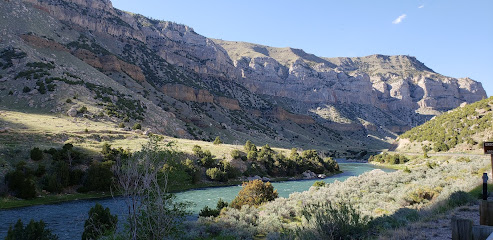
Fitzpatrick Wilderness
Explore the breathtaking Fitzpatrick Wilderness in Wyoming, a nature preserve perfect for hiking, camping, and experiencing the great outdoors.

Unmissable attractions to see
Bridger-Teton National Forest
Explore Bridger-Teton National Forest: A stunning expanse of wilderness, perfect for outdoor adventures and breathtaking natural beauty.

Buffalo Bill Dam & Visitor Center
Discover the beauty and history of Buffalo Bill Dam & Visitor Center, an iconic attraction in Cody, Wyoming, offering scenic views and educational exhibits.

Craig Thomas Discovery and Visitor Center
Explore the wonders of Grand Teton National Park at the Craig Thomas Discovery and Visitor Center, your gateway to nature and adventure.

Jenny Lake Overlook
Experience the stunning vistas and serene beauty of Jenny Lake Overlook in Grand Teton National Park, a must-see for nature enthusiasts and photographers alike.

National Museum of Wildlife Art
Discover the National Museum of Wildlife Art in Jackson, Wyoming: a stunning fusion of nature and artistic expression in a breathtaking setting.

National Museum of Military Vehicles
Explore the National Museum of Military Vehicles in Wyoming: A captivating journey through military history and extraordinary vehicles.
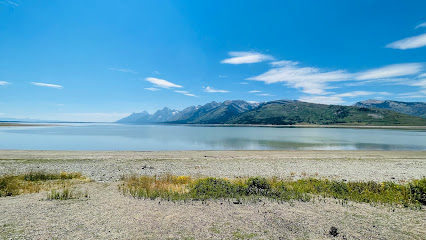
Oxbow Bend
Experience the breathtaking views and vibrant wildlife at Oxbow Bend, a must-see scenic spot in Wyoming's Grand Teton National Park.

Hot Springs State Park Bath House
Discover the therapeutic geothermal waters and stunning landscapes of Hot Springs State Park Bath House in Thermopolis, Wyoming, a tranquil escape for all.

Jackson Lake Overlook
Experience the stunning panoramic views of Jackson Lake and the Teton Range at the picturesque Jackson Lake Overlook in Grand Teton National Park.

Glacier View Turnout
Experience breathtaking mountain views at Glacier View Turnout, a must-visit scenic spot in the heart of Wyoming's natural beauty.

Sinks Canyon State Park
Sinks Canyon State Park: A breathtaking escape into Wyoming's natural beauty, featuring stunning landscapes, unique geological wonders, and abundant outdoor adventures.

Teton Point Turnout
Experience the stunning vistas of the Teton Range at Teton Point Turnout, a premier scenic spot in Grand Teton National Park.

Museum of the Mountain Man
Discover the legacy of the mountain men at the Museum of the Mountain Man in Pinedale, Wyoming—an engaging historical experience for all ages.

Laurance S. Rockefeller Preserve
Discover the serene beauty and abundant wildlife of Laurance S. Rockefeller Preserve, a natural sanctuary in the heart of Wyoming's Teton Range.

National Bighorn Sheep Center
Explore the National Bighorn Sheep Center in Dubois, Wyoming, to learn about bighorn sheep and their conservation in a stunning natural setting.

Essential places to dine
Bubba's Bar-B-Que Restaurant
Experience authentic Southern barbecue at Bubba's Bar-B-Que Restaurant in Jackson, Wyoming - where every bite tells a delicious story.

Gun Barrel Steak and Game House
Experience exceptional steaks and game dishes at Gun Barrel Steak and Game House in Jackson, Wyoming - where rustic charm meets fine dining.

Mangy Moose Jackson Hole
Discover Mangy Moose: A lively live music bar in Teton Village offering delicious American cuisine and unforgettable entertainment experiences.

Cowboy Cafe
Discover authentic American cuisine in Dubois at Cowboy Cafe – where hearty meals meet Western charm.

Wind River Brewing Company
Experience craft beer and delightful cuisine at Wind River Brewing Company in Pinedale, Wyoming - where flavor meets community.

Rusty Truck
Experience Riverton's culinary gem at Rusty Truck – where hearty meals meet friendly service in a cozy atmosphere.

Nora's Fish Creek Inn
Experience authentic American cuisine at Nora's Fish Creek Inn in Wilson, Wyoming - perfect for breakfast lovers and bar enthusiasts alike.

Glorietta Trattoria
Experience authentic Italian cuisine at Glorietta Trattoria - where every dish tells a story and every meal is a celebration.

The Depot Restaurant
Experience authentic Mexican cuisine at The Depot Restaurant in Riverton - where every meal is a celebration of flavor!
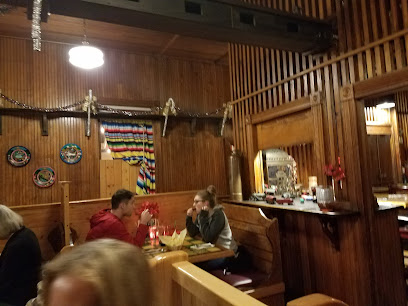
Snake River Grill
Discover culinary excellence at Snake River Grill in Jackson, WY - where American flavors meet fine dining sophistication.

Gannett Grill
Experience authentic American flavors at Gannett Grill in Lander, WY – where great food meets local charm.
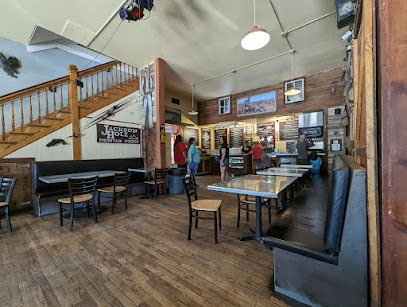
The Blue Lion
Discover exceptional American cuisine at The Blue Lion - where culinary artistry meets rustic elegance in Jackson, Wyoming.

Rocky Mountain Seafood
Experience fresh seafood delicacies in Afton, Wyoming at Rocky Mountain Seafood – where mountain charm meets coastal cuisine.

Trapper Grill
Experience family-friendly dining at Trapper Grill in Grand Teton National Park, where delicious meals meet breathtaking mountain views.

Red Willow Restaurant
Discover the flavors of Wyoming at Red Willow Restaurant – where local ingredients meet warm hospitality in Riverton.

Markets, malls and hidden boutiques
Pine Coffee Supply
Discover the rich aroma and cozy vibe at Pine Coffee Supply, Pinedale's beloved coffee shop in the heart of Wyoming.

Wind River Outdoor Company
Discover top-quality outdoor gear and expert advice at Wind River Outdoor Company, your adventure partner in Lander, Wyoming.

Wind River Trading Co.
Explore authentic Native American crafts and unique souvenirs at Wind River Trading Co., a cultural treasure in Fort Washakie, Wyoming.

Great Outdoor Shop
Explore the Great Outdoor Shop in Pinedale, WY – your one-stop destination for fishing, skiing, and all things adventure!

Avas Silver & Rock Shop
Discover stunning gems and handcrafted jewelry at Avas Silver & Rock Shop, the ultimate destination for rock and jewelry enthusiasts in Thermopolis, Wyoming.

Bomgaars
Explore Bomgaars in Pinedale, Wyoming - Your essential department store for auto accessories, clothing, pet supplies, and more.

Jackson Mercantile
Explore Jackson Mercantile: A treasure trove of unique gifts and local crafts in the heart of Wyoming's beautiful Jackson.

Two Rivers Fishing Co.
Explore Two Rivers Fishing Co. in Pinedale, Wyoming – your ultimate destination for quality fishing gear and local angling expertise.

307 Mercantile Co.
Discover the best outdoor gear at 307 Mercantile Co. in Pinedale, Wyoming – your gateway to adventure!

Crowheart Store
Explore the unique charm and local offerings of Crowheart Store, your go-to convenience store in Wyoming's scenic landscapes.

Country Store
Experience the welcoming charm of Dubois at the Country Store, your one-stop-shop for essentials and local flavors in Wyoming's scenic heart.

Wind River Range
Discover the breathtaking beauty of the Wind River Range in Wyoming, a paradise for outdoor enthusiasts and nature lovers.

Jackson Hole Resort Store
Discover unique gifts, local crafts, and essential outdoor gear at the Jackson Hole Resort Store, a must-visit destination for every traveler.

Country Lane Groceries & Gas
Experience the heart of Wyoming at Country Lane Groceries & Gas, where local charm meets convenience in Pinedale.

Nested West
Discover the heart of Pinedale at Nested West, a unique gift shop with locally crafted treasures and souvenirs that embody Wyoming's spirit.

Essential bars & hidden hideouts
Million Dollar Cowboy Bar
Experience the lively atmosphere and cowboy charm at the Million Dollar Cowboy Bar in Jackson, WY, a must-visit for every traveler.

Silver Dollar Bar
Experience the vibrant flavors and lively atmosphere of Silver Dollar Bar in Jackson, Wyoming, where American cuisine meets live entertainment.

Wind River Brewing Company
Discover the flavors of Wyoming at Wind River Brewing Company, where craft beer meets gourmet dining in a cozy brewpub atmosphere.
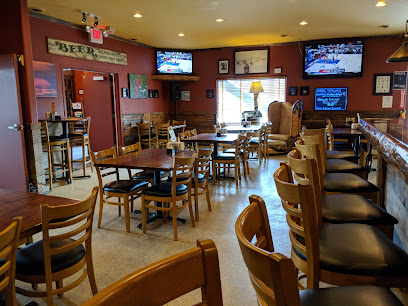
Eleanor's Again
Experience the best of Jackson, Wyoming at Eleanor's Again, where delicious grilled food meets a cozy ambiance and a great selection of drinks.

Stagecoach Bar
Discover Stagecoach Bar: A lively gathering spot at Teton Pass, serving delicious food and drinks amidst a warm, welcoming atmosphere.

The Bear Den | Restaurant & Bar
Discover the warmth and flavor of Wyoming at The Bear Den, where delicious meals and friendly service await in a cozy atmosphere.

Bar Ten
Experience the essence of Wyoming at Bar Ten, a lively bar and grill offering delicious American cuisine and a welcoming atmosphere.

Corral Bar & Grill
Savor delicious grill favorites in a friendly atmosphere at Corral Bar & Grill, the heart of Pinedale, Wyoming's dining scene.

Rustic Pine Tavern
Discover the charm of Rustic Pine Tavern in Dubois, WY, where unique drinks and a cozy atmosphere await travelers.
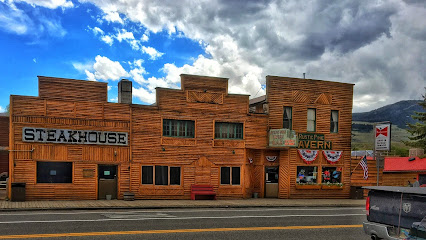
Tavern On the Greys
Experience the best of Wyoming’s culinary delights at Tavern On the Greys, where great food and drinks meet stunning mountain views.

Green River Bar
Experience Wyoming's vibrant pub culture at Green River Bar, where great drinks and friendly service await in a rustic yet lively atmosphere.

Ponderosa Bar & Lounge
Discover the lively Ponderosa Bar & Lounge in Green River, Wyoming - where good drinks, great company, and pool games collide for an unforgettable night.
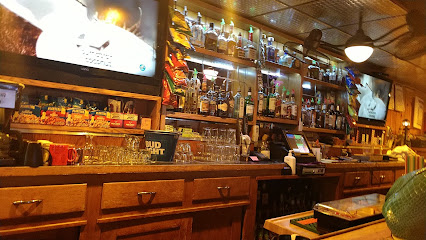
Cowboy Bar
Discover the Cowboy Bar in Pinedale, Wyoming - a perfect blend of authentic grill cuisine and vibrant bar culture, embodying the spirit of the American West.

Waterhole #3
Experience the warmth and charm of Waterhole #3, a beloved bar in Big Piney, Wyoming, perfect for drinks and socializing in a welcoming atmosphere.

Virginian Saloon
Discover the lively atmosphere of Virginian Saloon, a must-visit bar in Jackson, Wyoming, offering local drinks and a taste of cowboy culture.

Local Phrases about Wind River Range
-
- HelloHowdy
[Hou-dee] - GoodbyeSee ya
[See yuh] - YesYup
[Yuhp] - NoNah
[Nah] - Please/You're welcomePlease/You're welcome
[Please/You're welcome] - Thank youThanks
[Thanks] - Excuse me/SorryPardon me
[Pahr-dun me] - How are you?Howdy
[Hou-dee] - Fine. And you?Just fine. You?
[Just fine. Yuh?] - Do you speak English?Y'all speak English?
[Y'all speak Ing-glish?] - I don't understandI ain't catchin' ya
[I ain't catchin' yuh]
- HelloHowdy
-
- I'd like to see the menu, pleaseCan I see the menu?
[Can I see the menu?] - I don't eat meatI don't eat meat
[I don't eat meat] - Cheers!Cheers!
[Cheers!] - I would like to pay, pleaseCan I pay now?
[Can I pay now?]
- I'd like to see the menu, pleaseCan I see the menu?
-
- Help!Help!
[Help!] - Go away!Git!
[Git!] - Call the Police!Call the Sheriff!
[Call the Sheriff!] - Call a doctor!Get a doc here!
[Get a doc here!] - I'm lostI'm lost
[I'm lost] - I'm illI'm sick
[I'm sick]
- Help!Help!
-
- I'd like to buy...I reckon I'll buy...
[I reckon I'll buy...] - I'm just lookingJust lookin'
[Just lookin'] - How much is it?How much?
[How much?] - That's too expensiveThat's too much
[That's too much] - Can you lower the price?Can you do better on the price?
[Can you do better on the price?]
- I'd like to buy...I reckon I'll buy...
-
- What time is it?What time is it?
[What time is it?] - It's one o'clockIt's one o'clock
[It's one o'clock] - Half past (10)Half past ten
[Half past ten] - MorningMornin'
[Mornin'] - AfternoonAfternoon
[Afternoon] - EveningEvenin'
[Evenin'] - YesterdayYesterday
[Yesterday] - TodayToday
[Today] - TomorrowTomorrow
[Tomorrow] - 1One
[Wun] - 2Two
[Too] - 3Three
[Three] - 4Four
[Four] - 5Five
[Fahv] - 6Six
[Siks] - 7Seven
[Sev-un] - 8Eight
[Ate] - 9Nine
[Nahyn] - 10Ten
[Tin]
- What time is it?What time is it?
-
- Where's a/the...?Where's the...?
[Where's the...?] - What's the address?What's the address?
[What's the address?] - Can you show me (on the map)?Can you show me (on the map)?
[Can you show me (on the map)?] - When's the next (bus)?When's the next (bus)?
[When's the next (bus)?] - A ticket (to ....)A ticket (to ....)
[A ticket (to ....)]
- Where's a/the...?Where's the...?
History of Wind River Range
-
The Wind River Range has been home to Native American tribes for thousands of years. The Shoshone and Arapaho tribes have traditionally inhabited this region, utilizing its rich resources for sustenance. Petroglyphs and archaeological sites scattered throughout the range offer a glimpse into their ancient cultures and lifestyles.
-
The first European explorers to venture into the Wind River Range were fur trappers and mountain men in the early 19th century. Figures such as John Colter and Jim Bridger navigated the rugged terrain, establishing trade routes and mapping the area. Their interactions with local tribes were both cooperative and contentious, influencing the course of regional history.
-
In the mid-1800s, the Oregon Trail brought a wave of settlers through the Wind River Range. The South Pass, a vital corridor through the Rocky Mountains, was a key passageway for pioneers heading west. This trail significantly impacted the migration patterns and settlement of the American West.
-
In 1868, the United States government established the Wind River Indian Reservation. Initially created for the Eastern Shoshone, the reservation later also became home to the Northern Arapaho. This development was a turning point, marking a shift from a nomadic lifestyle to a more sedentary existence for these tribes.
-
The late 19th and early 20th centuries saw a boom in mining activities within the Wind River Range. Prospectors flocked to the area in search of gold, silver, and other minerals. While mining brought economic opportunities, it also led to environmental changes and conflicts over land use.
-
In the 20th century, the Wind River Range became a focal point for conservation efforts. The establishment of the Bridger Wilderness in 1964 underscored the importance of preserving this pristine landscape. Today, the range attracts outdoor enthusiasts from around the world, offering unparalleled opportunities for hiking, climbing, and wildlife observation.
-
The Wind River Range remains a place of cultural significance for the Shoshone and Arapaho tribes. Annual powwows, traditional ceremonies, and the preservation of native languages and crafts continue to be vital aspects of life on the reservation. The modern-day Wind River Range is a tapestry of natural beauty and cultural depth, reflecting its rich and varied history.
Wind River Range Essentials
-
The Wind River Range is located in western Wyoming, United States. The nearest major airports are Jackson Hole Airport (JAC) and Riverton Regional Airport (RIW). From Jackson Hole, the drive is approximately 2-3 hours, while from Riverton it is about 1-2 hours. You can rent a car at either airport or take a shuttle service. Additionally, there are bus services from larger cities like Denver and Salt Lake City to nearby towns such as Pinedale and Lander.
-
Transportation within the Wind River Range area is limited. Renting a car is the most convenient option for exploring the region. Roads can be rugged, so a vehicle with good clearance is recommended. There are a few local taxi services in towns like Pinedale and Lander, but they are not always readily available. For backcountry travel, hiking and horseback riding are popular options. Some outfitters offer guided tours and pack trips.
-
The official currency in the United States is the US Dollar (USD). Credit cards are widely accepted in towns and at major attractions, but it is advisable to carry some cash for smaller establishments and remote areas. ATMs are available in towns like Pinedale and Lander, but may not be accessible in more remote locations within the Wind River Range.
-
The Wind River Range is generally a safe destination, but it is essential to take standard precautions. Always let someone know your travel plans and expected return time, especially when hiking or exploring remote areas. Wildlife encounters, including bears and mountain lions, can occur; carry bear spray and know how to use it. Stay aware of weather conditions, as they can change rapidly. There are no specific high-crime areas targeting tourists, but always stay vigilant and secure your belongings.
-
In case of an emergency, dial 911 for immediate assistance. For medical emergencies, the nearest hospitals are located in Pinedale, Lander, and Riverton. It is highly recommended to have travel insurance that covers medical emergencies and evacuation. For backcountry emergencies, carrying a satellite phone or a personal locator beacon (PLB) can be lifesaving. Local ranger stations can provide assistance and information on safety regulations.
-
Fashion: Do wear layers and sturdy hiking boots when exploring the outdoors. Avoid wearing flimsy shoes or inappropriate attire for rugged terrain. Religion: Do respect Native American cultural sites and practices; always ask for permission before photographing or entering sacred areas. Public Transport: Do plan your transportation in advance, as public transport options are limited. Don't rely solely on public transport for remote areas. Greetings: Do greet people with a friendly 'hello' or 'hi,' and a firm handshake is common. Eating & Drinking: Do try local specialties and be courteous to service staff. Don't litter in natural areas; always pack out what you pack in.
-
To experience the Wind River Range like a local, visit during the off-peak seasons of spring and fall for fewer crowds and spectacular scenery. Engage with local outfitters for guided hiking, fishing, or horseback riding trips, as they can offer insights into the best spots and hidden gems. Attend local events and festivals in towns like Pinedale and Lander to immerse yourself in the community. Don't miss the chance to stargaze, as the Wind River Range offers some of the darkest skies in the United States.
Nearby Cities to Wind River Range
-
Things To Do in Riverton
-
Things To Do in Cody
-
Things To Do in Yellowstone National Park
-
Things To Do in Rock Springs
-
Things To Do in Rexburg
-
Things To Do in Idaho Falls
-
Things To Do in Pocatello
-
Things To Do in Evanston
-
Things To Do in Logan
-
Things To Do in Big Sky
-
Things To Do in Sheridan
-
Things To Do in Ogden
-
Things To Do in Bozeman
-
Things To Do in Billings
-
Things To Do in Vernal












